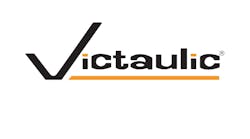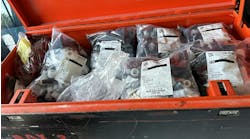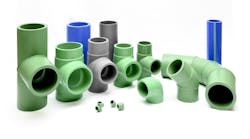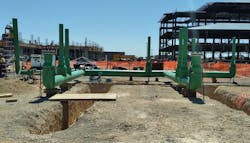Latest from Piping
Sponsored
IRVING, TX — The Plastics Pipe Institute, Inc. (PPI) has released a new Model Specification document for selecting, specifying, and installing polypropylene (PP) plastic piping in plumbing and mechanical projects. PPI MS-8 Model Specification for Polypropylene (PP-R & PP-RCT) Pressure Pipe Systems for Plumbing & Mechanical Applications applies to hot- and cold-water plumbing distribution, chilled water, cooling/condenser water, make-up water, and hydronic heating and cooling distribution piping systems, including district energy. It was prepared as a service to the industry by the association’s Building & Construction Division (BCD).
According to PPI, with high temperature and pressure capabilities, polypropylene pressure pipes are suitable for demanding piping applications in commercial buildings, data centers, factories, schools, health care facilities, hotels, and more.
PPI MS-8 is intended to be a guide to support engineers, designers, and specifiers of plumbing and mechanical piping systems with language that can be copied and pasted into design documents to ensure that the latest requirements for polypropylene piping materials are used. It provides suggested language for PP pipes, fittings, and valves; delivery, handling, and storage; joining, installation, and protection; insulation and protection; pressure testing and commissioning of polypropylene pressure pipe systems.
“Polypropylene is a versatile pressure piping material used in a wide range of applications,” stated Lance MacNevin, P. Eng., director of engineering for PPI's Building & Construction Division. “It is available in two types: PP-R, or polypropylene random copolymer, and PP-RCT, polypropylene random copolymer with modified crystallinity and temperature resistance. Each type is compatible with the other. PP pressure piping systems were first used for plumbing and hydronic heating in the 1980s in Europe and introduced to North America more than twenty years ago.
“One of the advantages of a PP system is that both pipes and fittings are produced from the same material and can be joined using reliable heat fusion, which provides a leak-free system without the use of open flame,” he continued. “Product standards and specifications for PP piping have evolved in recent years, so a specifier who uses outdated language may inadvertently specify a product that no longer exists in the market, or one that is simply less capable than the current state-of-the-art.”
The team of experts from PPI member companies that developed MS-8 consulted with the latest model standards and codes from ASTM, CSA, NSF, IAPMO, and ICC when developing the content. The new model spec includes special requirements for potable water and chilled water applications, as well as flame and smoke ratings, thermal and vapor barriers, and more.
Additional information and data about polypropylene and other piping materials is available from the PPI Building & Construction Division at www.plasticpipe.org/buildingconstruction.



